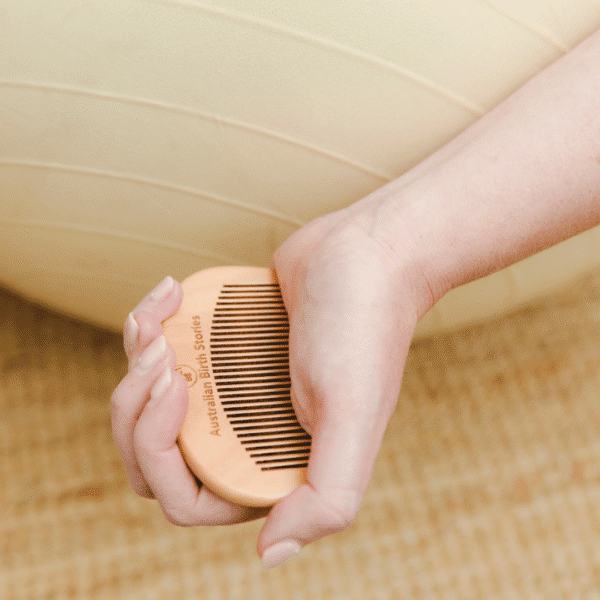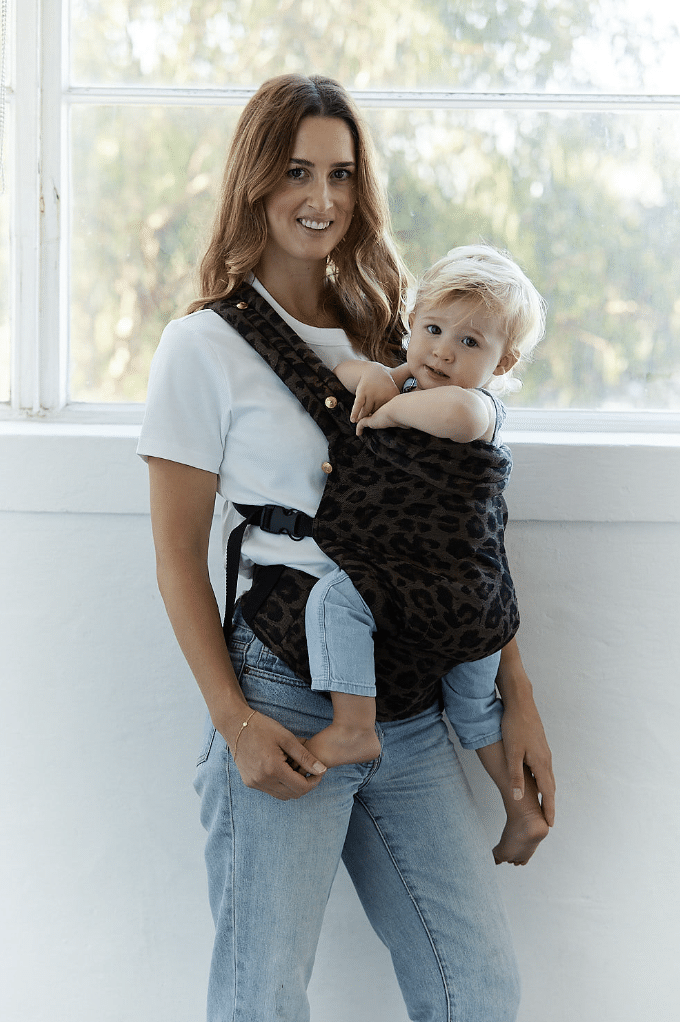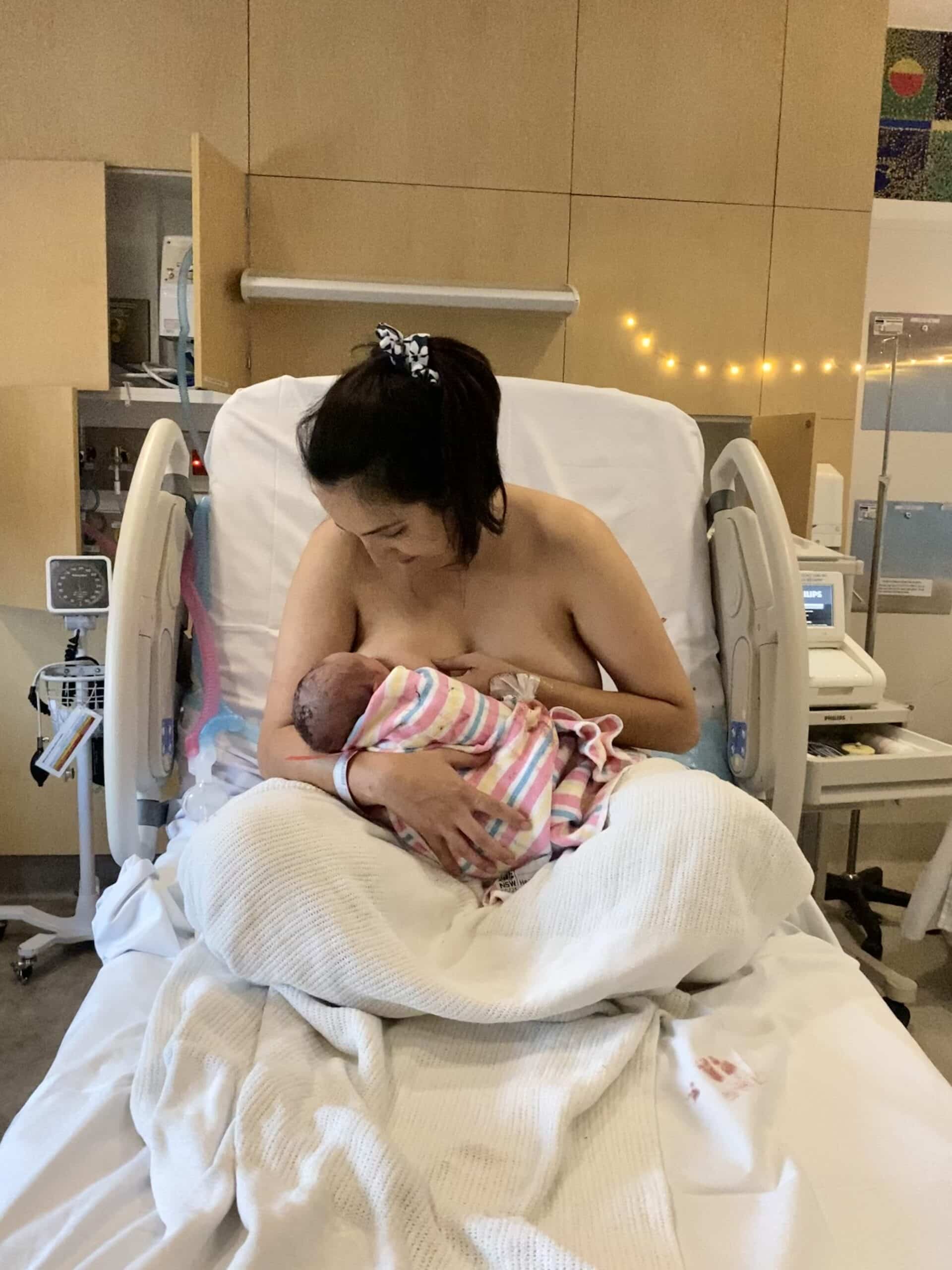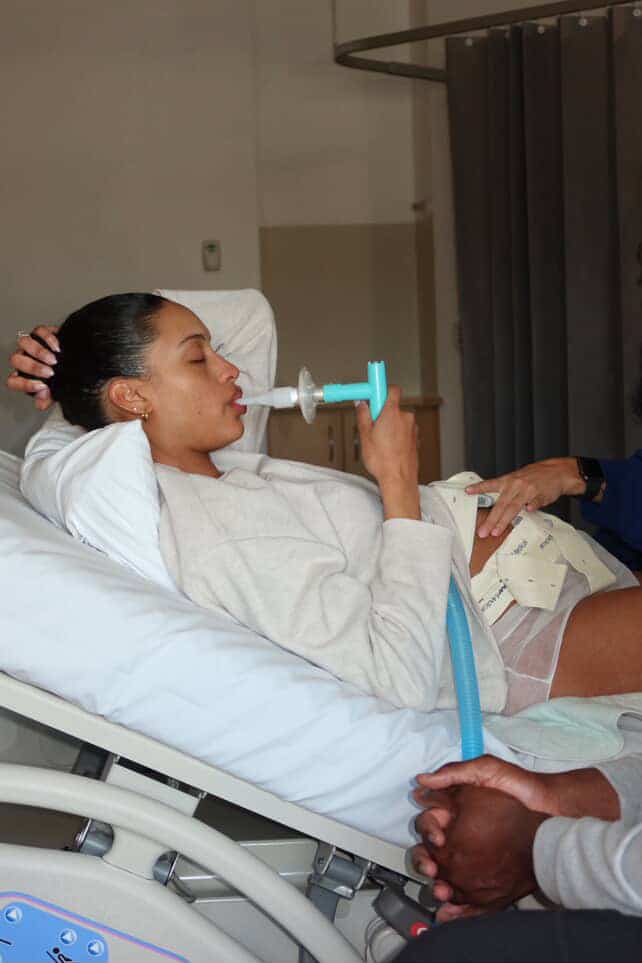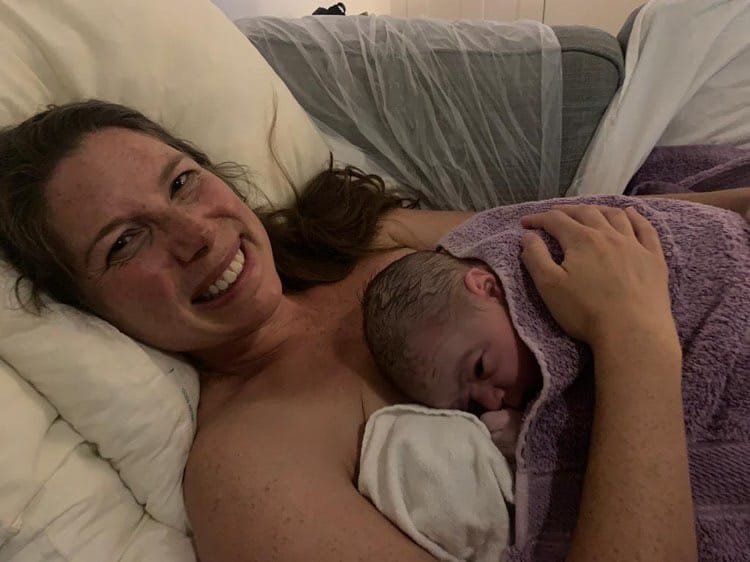Podcasts Alice – Doula and Midwife, private obstetrician, home birth, planned postpartum
EPISODE 464
Alice – Doula and Midwife, private obstetrician, home birth, planned postpartum
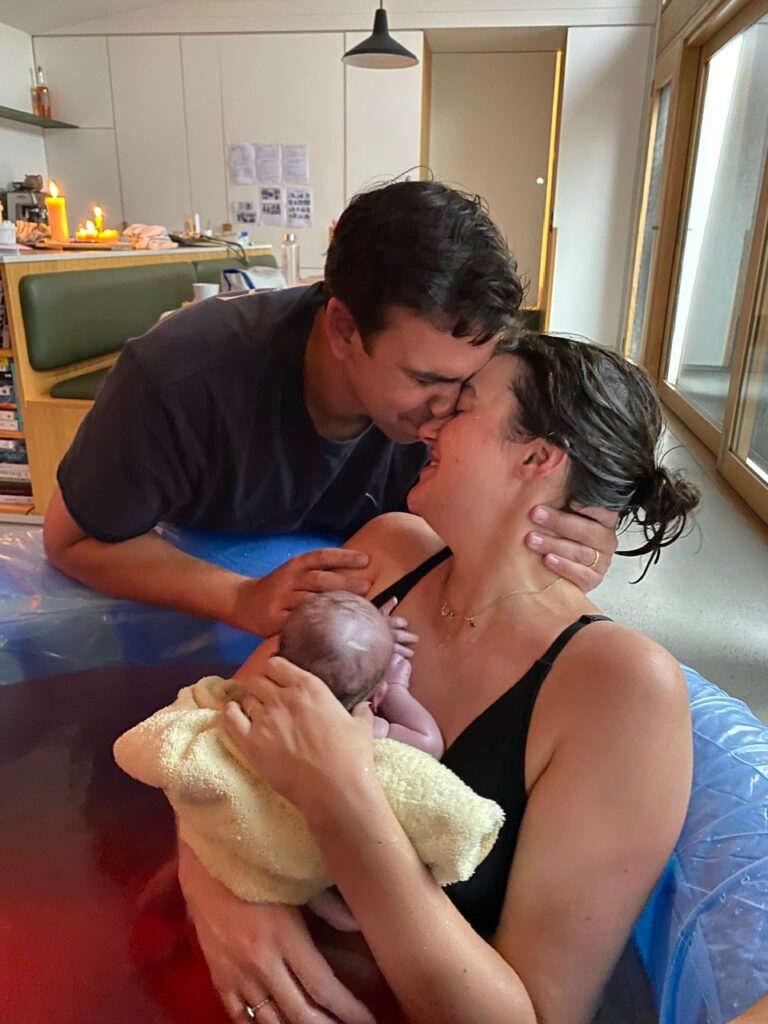
“I always knew I wanted to have kids but it wasn’t a big part of my identity. I was a lawyer and a career woman and I thought kids would fit around that. Once we got married we started trying and I fell pregnant really easily. It was really cruisy – I hardly had any symptoms in early pregnancy. We were the first in our friendship group to have kids but had enough social conditioning to know that we should get obstetric health cover and then choose a private obstetrician based on fairly arbitrary criteria and not any actual research. Our choice was based on fees and word of mouth and I’ve come a long way from that. I had my first appointment at eight weeks and chose my hospital based on the menu and the nursery which is just laughable now.
“I think it’s really important to work out whether your obstetrician shares your philosophy. Regardless of the research I’d done, both my husband and I still felt uncomfortable asking my OB questions which I now know is a red flag. There were also newspaper clippings on the midwife’s room critiquing birth plans so again, more red flags. I had an ultrasound at 36/37 weeks which led into a discussion about having a big baby but I’m 6ft so I knew I would have a big baby. That’s when the induction conversation started and I knew enough to know I could wait till 41 weeks and she said she’d check the birth suites and went ahead and booked me in at 40+3 as a routine induction – there was no medical reason for it. Luckily I went into labour spontaneously.
“I started to be quite conscious with my natural induction attempts – bouncing on the ball, drinking raspberry leaf tea. I went to my brother’s party which was a great oxytocin hit and then I went home to bed and woke at 3am with significant period pain and I just emptied my bowels on the toilet which seems to be the way I go into labour. Things picked up pretty quickly; contractions were five minutes apart but by no means was I in active labour. The hospital wasn’t busy so they encouraged me to stay home and call back when things intensified. We ended up arriving at hospital at 6:30am because I felt like I wanted to set up my space and settle into the hospital.
“As soon as I got there they put the CTG monitor on and soon after they noticed meconium in my waters so the CTG had to go back on. I remained active and I accepted the gas when it was offered and although it didn’t help my pain relief, it did assist my breathing. It was all moving along quite quickly, especially for a first-time birth. An obstetrician came in (my OB was away) and he did a vaginal examination (VE) and I was 4cm and quite deflated by that. That said, contractions really ramped up and at 1pm, when the midwife shift changed, I lost my lovely supportive midwife and I did utter some desire for pain relief but I was still coping really well and I was 8cm so it was definitely transition talking. I made it very clear that I didn’t want an epidural because I didn’t want to be on the bed so the obstetrician gave me a massive dose of morphine and I had to get on the bed. I was very spaced out but it didn’t take the pain away. They did another VE and then they really coached my pushing – tuck my chin, hold my breath – which I now know is terrible for the baby’s oxygenation and my pelvic floor. There were a few signs of baby being in distress so they said episiotomy and vacuum and there was no discussion about that. Twelve hours from period-pain contractions he was born. It was very quick. Hugo was fine at birth but very sleepy and there was a lot less feeding in the first 24 hours.
“I felt like I’d been hit by a truck and I had – so much morphine – but I also felt like I’d run a marathon and won it. I rolled into motherhood feeling transformed from birth (it took me much longer to realise what had gone wrong and how I’d been treated). My recovery from the episiotomy was terrible and very painful and I remember we went for a walk at five-days postpartum and I was hobbling – another red flag and not what I should have been doing. Breastfeeding went really well and I loved postpartum and motherhood that I found myself consuming so much information so I decided to do a postpartum doula training with Newborn Mothers.
“Dave and I started talking about when we would start trying for another baby. We got pregnant in the first or second month and I didn’t have any symptoms which was so similar to Hugo’s pregnancy. I had heavy blood loss at seven weeks and I’d already been in contact with Mama Midwives which was really helpful. The midwife there was very supportive and empathetic and told me that I probably was miscarrying and she reassured me to do what I felt I needed to do. I was really knocked for six by the loss.
“I was back at work as a lawyer and I was also working as a postpartum doula and buying and selling a house so it was an all consuming time. It took me another six months to conceive and I started to lose confidence in my body. Of course whenever I walked down the street all I’d see were pregnant women rubbing their bellies and that was so triggering for me. I made an appointment to see a fertility doctor and did a positive pregnancy test the day before. I went ahead with seeing her and she followed me through early pregnancy and did lots of tests which meant I could see that my progesterone was borderline and my hCG wasn’t doubling. I started bleeding and I went for a dating scan and there was a heartbeat but I wasn’t reassured by that. The next day I was bleeding and cramping again and there was no heartbeat. I’d been holding onto my job as a lawyer for maternity leave but from then on I knew I had to make change and that was starting the road into midwifery.
“I went back to my fertility doctor and I sent off the baby’s tissue and tests confirmed it was a chromosomal abnormality. After that I did cycle tracking through blood tests; it was three-months of tracking that was bulk-billed through Genea. I conceived Billy three months after my second misscarriage and then he was born on the same day I’d had that miscarriage. What the miscarriages gave me was confidence in my body; my body had gone into labour spontaneously and I’d birthed my babies at home so I felt like I could birth Billy at home, too.
“Our savings had drained so although I wanted private midwifery care, the finances were challenging. I was a year into midwifery training and had experience at Sunshine Hospital and there were whispers that their homebirth programme may be coming back after Covid. I applied and got the call at 29 weeks from the midwife I’d been allocated to. My whole body exhaled and everything felt absolutely right.
“I knew I didn’t want to be induced or have any vaginal examinations and I spent a lot of time considering who I wanted to be in my birth space. I knew my midwives were philosophically aligned with me but I still wrote a birth plan which I felt was more important if a hospital transfer was necessary. I also hired a doula so regardless of what happened for my birth, I had that consistency of care with her.
“The stars aligned and both my midwives were available when I went into labour with Billy. By 7am everyone was here and Hugo had woken up. My primary midwife had warned me that when everyone started to arrive and the sun was up, my labour may stall. My mum came and didn’t succeed in getting Hugo out of the house so he just stayed. Labour really picked up by 8am and I felt supported to do what I needed to do. I was using a birth sling – hanging off it – in the garden and then I went inside to have a shower but the hot water ran out. Thankfully the birth pool was full and the right temperature and Hugo ended up in there with me. At 9am the contractions started getting more intense and I found myself going under water during contractions to really soften my face and lips (and pelvic floor).
“Billy was born at 10:40am and I got out of the pool about 15 minutes later and immediately had contractions to birth the placenta. I was on the couch and really blown away by the intensity of the contractions. I went to the toilet and it ended up taking about 40 minutes to birth it. I went straight back to the couch and the difference was so huge between my hospital and homebirth. My doula was feeding me, Billy hadn’t left my chest and he was still attached to the cord, there was no rush around anything, my midwives checked my perineum and I had a second-degree tear and I decided to have it sutured. It was all so beautiful and positive. The recovery from my second-degree tear was so easy and pain-free compared to my episiotomy.”
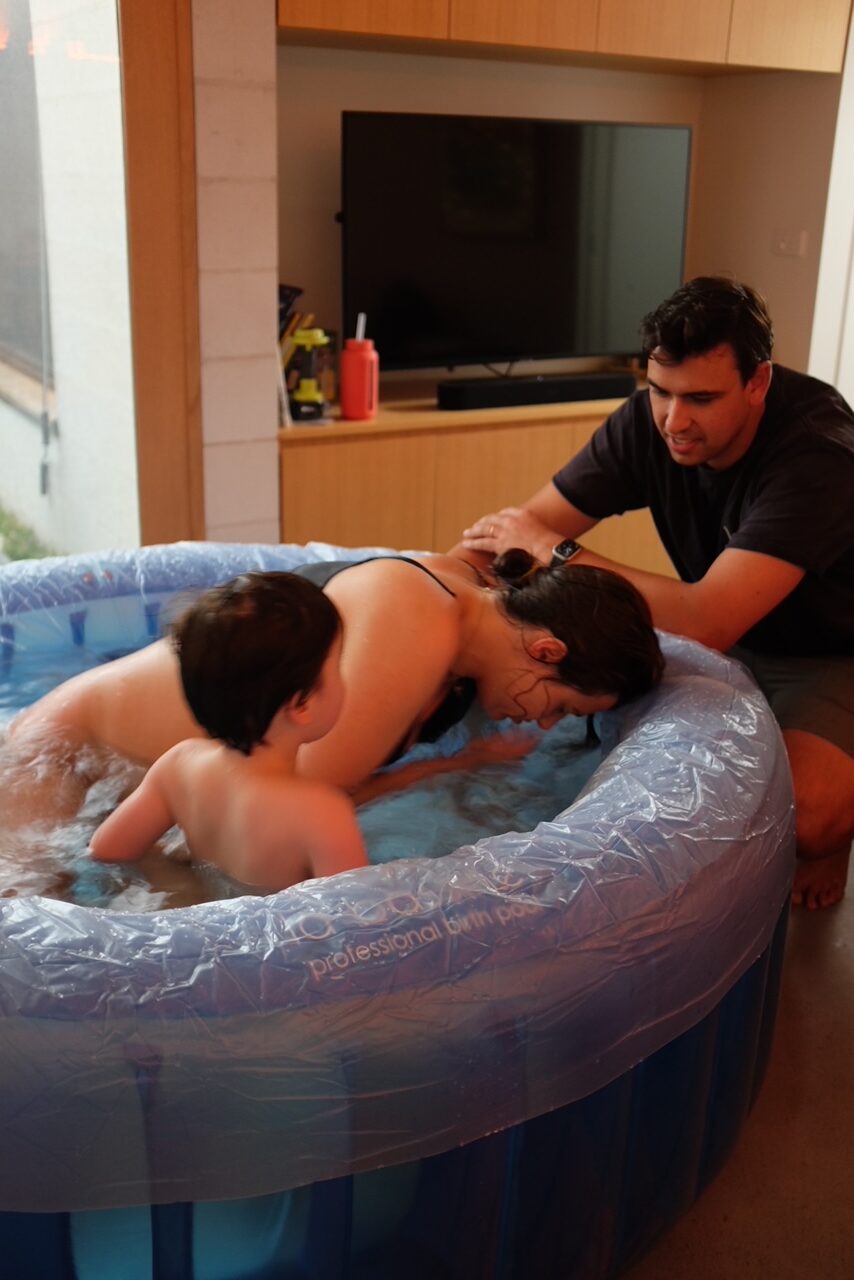
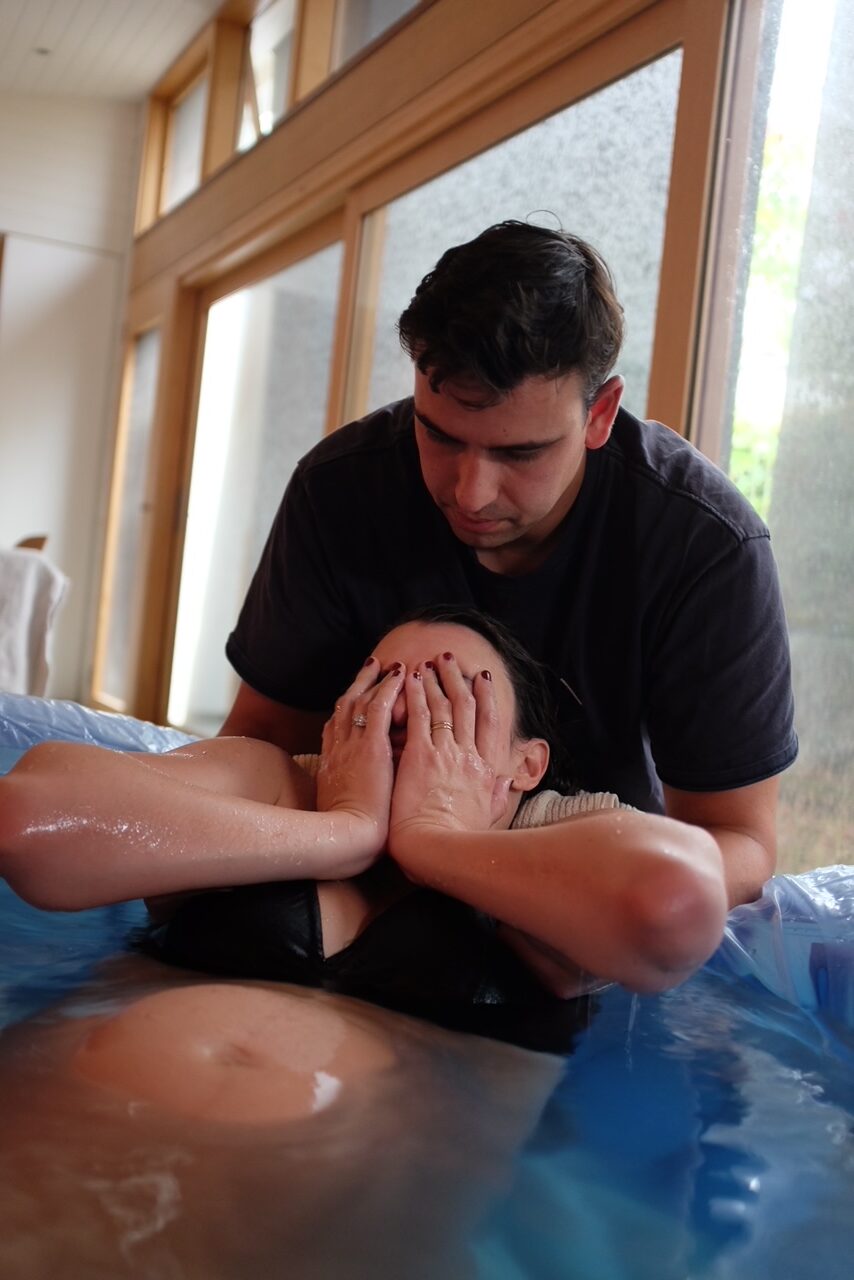


Topics Discussed
Doula, Home birth, planned postpartum, pregnancy loss, Private care model, Student midwife
Episode Sponsor
Today’s episode is brought to you by the Tinybeans app. As parents, we’re constantly seeking the best for our little ones, especially when it comes to capturing and sharing every unforgettable moment.
That’s why I recommend Tinybeans to all new parents.
Tinybeans offers a seamless way to document your child’s journey from pregnancy to preschool and beyond and allows your closest family and friends to follow along with every gummy smile, milestone birthday, and special family vacation. With features like unlimited photo and video uploads, customizable photo books, and journal prompts, Tinybeans simplifies the way you record, relive, and privately share your family’s everyday moments, turning them into cherished memories.
Download the Tinybeans app and create your free account to start sharing all your silliest and sweetest memories, easily, all in one place.
Categories
Related Products
-
Birth Combs: Harness Your Body’s Natural Pain Relief
$24.95Crafted from smooth, natural wood, our birth combs activate specific pressure points in your hands that trigger your body’s innate pain-relieving responses.
Join the conversation
Sign up to get the latest updates, freebies, podcast releases straight into your inbox
@AustralianBirthStories
Follow along with us
@AustralianBirthStories
Follow along with us
@AustralianBirthStories
Follow along with us
@AustralianBirthStories
Follow along with us
@AustralianBirthStories
Follow along with us
@AustralianBirthStories
Follow along with us
@AustralianBirthStories
Follow along with us
@AustralianBirthStories
Follow along with us
@AustralianBirthStories
Follow along with us
@AustralianBirthStories
Follow along with us
@AustralianBirthStories
Follow along with us
@AustralianBirthStories
Follow along with us
